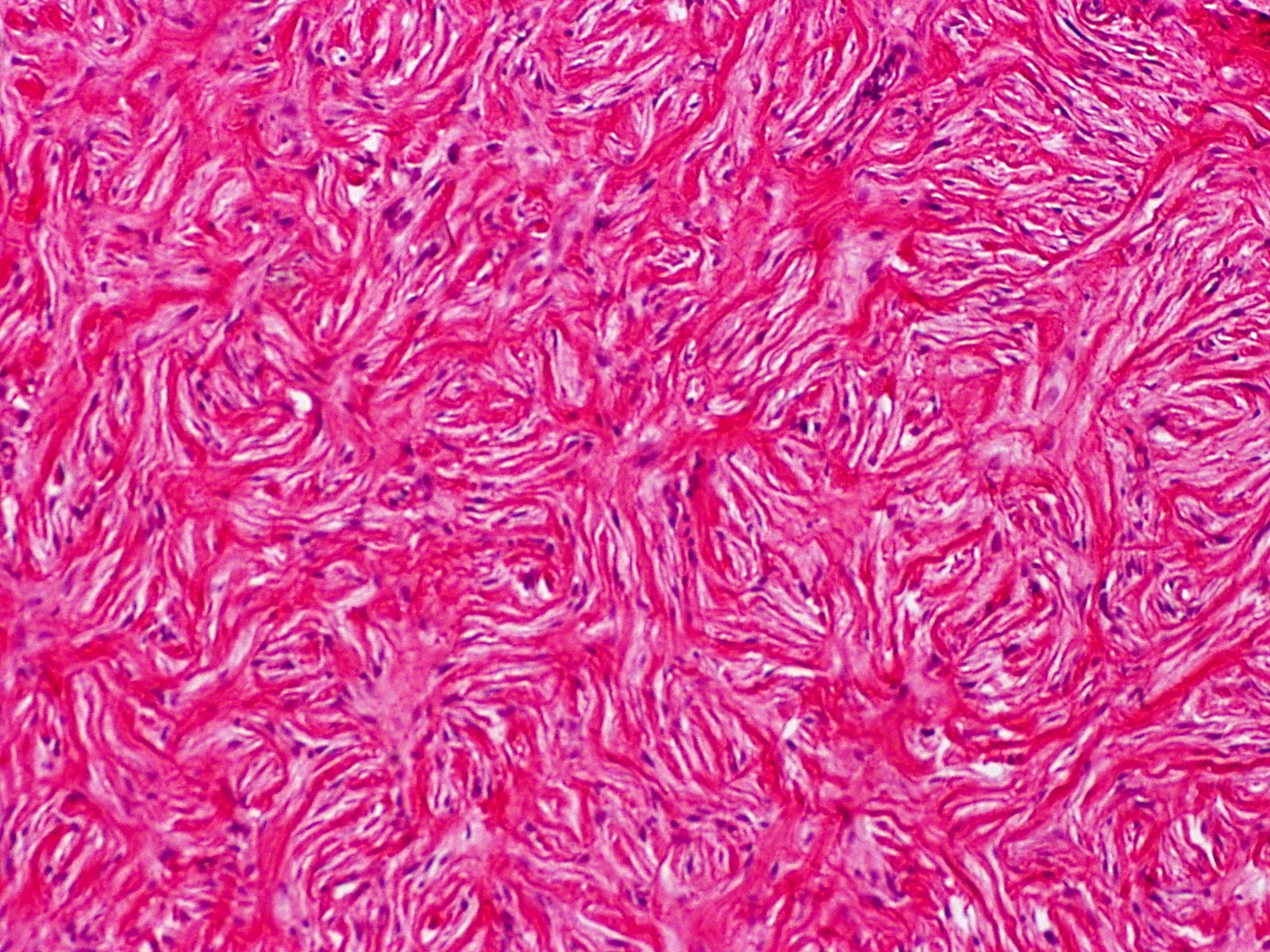Connective tissue nevus

Editor-In-Chief: Prab R Tumpati, MD
Obesity, Sleep & Internal medicine
Founder, WikiMD Wellnesspedia &
W8MD medical weight loss NYC and sleep center NYC
| Connective tissue nevus | |
|---|---|

| |
| Synonyms | Shagreen patch, collagenoma |
| Pronounce | N/A |
| Specialty | N/A |
| Symptoms | Skin lesions, nodules, plaques |
| Complications | Cosmetic concerns, potential association with tuberous sclerosis |
| Onset | Childhood or adolescence |
| Duration | Chronic |
| Types | N/A |
| Causes | Genetic factors, sporadic |
| Risks | Family history of genetic syndromes |
| Diagnosis | Clinical examination, skin biopsy |
| Differential diagnosis | Dermatofibroma, neurofibroma, lipoma |
| Prevention | N/A |
| Treatment | Surgical excision, laser therapy |
| Medication | N/A |
| Prognosis | Generally benign |
| Frequency | Rare |
| Deaths | N/A |
Connective Tissue Nevus[edit]

A connective tissue nevus is a type of hamartoma that arises from the connective tissue of the skin. These lesions are characterized by an overgrowth of one or more components of the dermal connective tissue, such as collagen, elastin, or glycosaminoglycans.
Classification[edit]
Connective tissue nevi can be classified based on the predominant type of connective tissue involved:
- Collagenous nevi: These are the most common type and are characterized by an excess of collagen fibers. They are often referred to as "shagreen patches" when associated with tuberous sclerosis.
- Elastin nevi: These nevi show an increase in elastin fibers and are sometimes associated with conditions like pseudoxanthoma elasticum.
- Proteoglycan nevi: These are less common and involve an increase in proteoglycans within the dermis.
Clinical Presentation[edit]
Connective tissue nevi typically present as firm, skin-colored or yellowish plaques or nodules. They can appear anywhere on the body but are most commonly found on the trunk and extremities. The lesions are usually asymptomatic but may be associated with other systemic conditions.
Associated Conditions[edit]
Connective tissue nevi can occur as isolated lesions or as part of a syndrome. Some of the syndromes associated with connective tissue nevi include:
- Tuberous sclerosis: Characterized by the presence of shagreen patches, which are collagenous nevi.
- Buschke-Ollendorff syndrome: A rare genetic disorder characterized by the presence of elastin nevi and osteopoikilosis.
- Proteus syndrome: A complex disorder that can include connective tissue nevi among its many manifestations.
Diagnosis[edit]
The diagnosis of a connective tissue nevus is primarily clinical, based on the appearance of the lesions. A skin biopsy can be performed to confirm the diagnosis and to determine the predominant type of connective tissue involved.
Treatment[edit]
Treatment is usually not necessary for isolated connective tissue nevi unless they cause cosmetic concerns or discomfort. In such cases, surgical excision or laser therapy may be considered.
See also[edit]
Ad. Transform your life with W8MD's Budget GLP-1 injections from $75


W8MD offers a medical weight loss program to lose weight in Philadelphia. Our physician-supervised medical weight loss provides:
- Weight loss injections in NYC (generic and brand names):
- Zepbound / Mounjaro, Wegovy / Ozempic, Saxenda
- Most insurances accepted or discounted self-pay rates. We will obtain insurance prior authorizations if needed.
- Generic GLP1 weight loss injections from $75 for the starting dose.
- Also offer prescription weight loss medications including Phentermine, Qsymia, Diethylpropion, Contrave etc.
NYC weight loss doctor appointmentsNYC weight loss doctor appointments
Start your NYC weight loss journey today at our NYC medical weight loss and Philadelphia medical weight loss clinics.
- Call 718-946-5500 to lose weight in NYC or for medical weight loss in Philadelphia 215-676-2334.
- Tags:NYC medical weight loss, Philadelphia lose weight Zepbound NYC, Budget GLP1 weight loss injections, Wegovy Philadelphia, Wegovy NYC, Philadelphia medical weight loss, Brookly weight loss and Wegovy NYC
|
WikiMD's Wellness Encyclopedia |
| Let Food Be Thy Medicine Medicine Thy Food - Hippocrates |
Medical Disclaimer: WikiMD is not a substitute for professional medical advice. The information on WikiMD is provided as an information resource only, may be incorrect, outdated or misleading, and is not to be used or relied on for any diagnostic or treatment purposes. Please consult your health care provider before making any healthcare decisions or for guidance about a specific medical condition. WikiMD expressly disclaims responsibility, and shall have no liability, for any damages, loss, injury, or liability whatsoever suffered as a result of your reliance on the information contained in this site. By visiting this site you agree to the foregoing terms and conditions, which may from time to time be changed or supplemented by WikiMD. If you do not agree to the foregoing terms and conditions, you should not enter or use this site. See full disclaimer.
Credits:Most images are courtesy of Wikimedia commons, and templates, categories Wikipedia, licensed under CC BY SA or similar.
Translate this page: - East Asian
中文,
日本,
한국어,
South Asian
हिन्दी,
தமிழ்,
తెలుగు,
Urdu,
ಕನ್ನಡ,
Southeast Asian
Indonesian,
Vietnamese,
Thai,
မြန်မာဘာသာ,
বাংলা
European
español,
Deutsch,
français,
Greek,
português do Brasil,
polski,
română,
русский,
Nederlands,
norsk,
svenska,
suomi,
Italian
Middle Eastern & African
عربى,
Turkish,
Persian,
Hebrew,
Afrikaans,
isiZulu,
Kiswahili,
Other
Bulgarian,
Hungarian,
Czech,
Swedish,
മലയാളം,
मराठी,
ਪੰਜਾਬੀ,
ગુજરાતી,
Portuguese,
Ukrainian